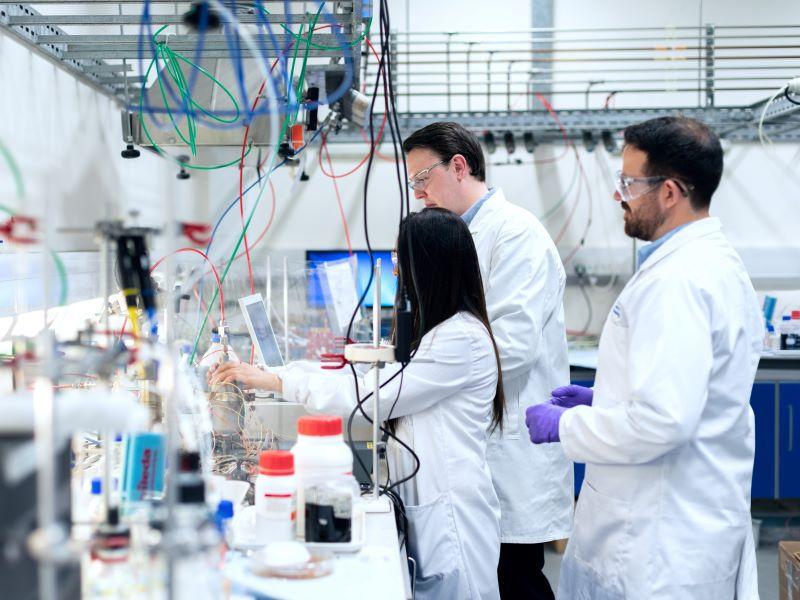How to increase research productivity and impact are questions that drive major strategic decisions within many institutions. We carried out a systematic review of 87 empirical studies focused on the organisational factors that influence the individual research performance of academics. This resource offers seven key insights, based on this review, which could help institutions and research managers boost research productivity.
1) A large amount of external funding might not translate into a higher volume of research and higher number of citations if this funding is highly fragmented, eg, comes from many different sources, and the administration-related time cost for researchers is high.
- If your institution wants to get more from funding than just a reputation signal, help your researchers to secure larger grants and provide administrative support for managing these grants.
- Take into account career stage – researchers might need to build research capacity by accumulating smaller grants before they can obtain larger ones. Explore discipline-specific links between smaller and larger grants: is there a synergy between them and do smaller grants eventually lead to larger ones?
2) When industry funding accounts for more than one-third of a researcher’s funding, this is likely to lead to a lower volume of scientific publications and citations, except for in some types of applied research.
- Do not rely on industry partners for substantial funding of your research activities and keep an eye on researchers who are particularly successful in attracting industry funding, to spot early signs of research performance decline owing to the competing goals of industry funders and the scientific community.
- While industry-funded research has a potential to create societal impact, and thus compensate for lower scientific impact, it also creates the risk of researchers exiting academia, in which case your institution would lose all types of research outputs. On the other hand, industry-funded projects can be good training grounds for PhD students, improving their employability outside academia. Be sure to capture those benefits by linking industry-funded projects to doctoral training.
3) Short-term and long-term research outcomes are driven by different, often conflicting, resource allocation strategies.
- For short-term performance boost, concentrate resources and allocate them to already successful researchers. Expect to see the cost of retaining these researchers increase in the mid to long term, because they will become attractive goals for labour market poaching, and consider the consequences of losing these researchers for your institution’s research performance.
- For long-term performance improvement, allocate resources to a broader and more diverse cohort of researchers. Expect to see a short-term research performance stagnation or decline while you are building your future in-house research capacity.
4) There is a trade-off between research autonomy within doctoral programmes and the speed or originality of graduates’ research performance.
- If you want PhD graduates to be employable in academia, provide them with only a limited amount of research autonomy and engage them in the ongoing research projects from the early stages of their degree. However, if you plan to hire any of those graduates yourself, keep in mind that their research is likely to be less original and their long-term research output might be lower than that of their peers who had more research autonomy during their PhD.
- If your institution’s mission is to educate PhD students for long-term scientific excellence, provide them with high research autonomy, but keep in mind they are likely to be less competitive in the labour market at the time of degree completion. Consider providing students with targeted help with academic job search to compensate for the lack of publications. Also consider providing separate rewards for supervisors, because they might never get any joint publications out of several years’ worth of work with these PhD students.
- Choosing PhD graduates’ short-term employability over long-term scientific excellence is likely to be more relevant for younger institutions and institutions with a weaker research reputation. These institutions are at a disadvantage both at the input stage and at the outcome stage of PhD programmes: they attract a smaller number of highly capable PhD candidates and struggle to place them in academia owing to lack of connections and institutional reputation. Therefore, they might need to manage each PhD graduate’s journey more closely, because each graduate’s failure to secure an academic job would reflect more negatively on the viability of their doctoral programme than it would in a more established institution.
5) There are trade-offs involved in developing one dimension of research performance over another – for instance, volume of publications versus societal impact.
- In academic recruitment and promotion, it is unreasonable to treat the volume of research, citations and societal impact in a simple additive manner, expecting researchers to have it all. Examine the alignment of different metrics with your institution’s strategy to understand which metrics are the most important for you. Take a portfolio approach to managing research performance and offer different excellence pathways to academic career success within your institution.
- In managing the portfolio of performance outcomes, be sure to have appropriate metrics which are distinct for each excellence pathway. Select metrics which are meaningful and can be pragmatically used in the context of your institution.
6) When investing in research infrastructure, institutions tend to pay close attention to physical capital, such as buildings and lab equipment, and human capital, such as the quantity and quality of researchers. Less attention is paid to the connection between these types of capital, yet there might be significant benefits in actively managing the interface between the physical spaces and the people.
- Seek to create a balance between the scientists’ need for frequent face-to-face communication and their need for uninterrupted research time. When designing physical environments on campus, seek to facilitate serendipitous conversations between researchers from different disciplines. The need for uninterrupted research time should be supported by reasonable student communication policies and the availability of quiet private spaces on campus where researchers can focus on scientific work.
- Treat scientific travel in a data-informed, strategic manner. Where possible, increase funding for sabbaticals, research visits and conference travel to support international collaboration and compensate for internal gaps in research capacity. Regularly collect data to assess the relative value of small research gatherings versus large events, and review your conference funding policies accordingly.
7) Peer-to-peer faculty mentoring is an effective mechanism for fostering research capacity but only if this mentoring works as a formal initiative.
- Do not rely on faculty building serendipitous mentorship relationships and instead establish formal mentorship programmes that provide appropriate rewards to the mentors. Informal mentoring can be the first step towards establishing mentoring within your institution, but it should not be the final outcome.
- Make sure that faculty selected as mentors have a good understanding of the links between resources, processes and outcomes in different types of research activities, as described in all the points above. Ensure that you have a portfolio of mentors who can help faculty develop capacity in relation to different types of research outcomes.
This advice is drawn from Olga Ryazanova and Jolanta Jaskiene’s paper Managing individual research productivity in academic organizations: A review of the evidence and a path forward in Research Policy.
Olga Ryazanova is a lecturer in management at Maynooth University School of Business and Jolanta Jaskiene is senior research manager at ISM University of Management and Economics.
If you found this interesting and want advice and insight from academics and university staff delivered directly to your inbox each week, sign up for the THE Campus newsletter.




comment